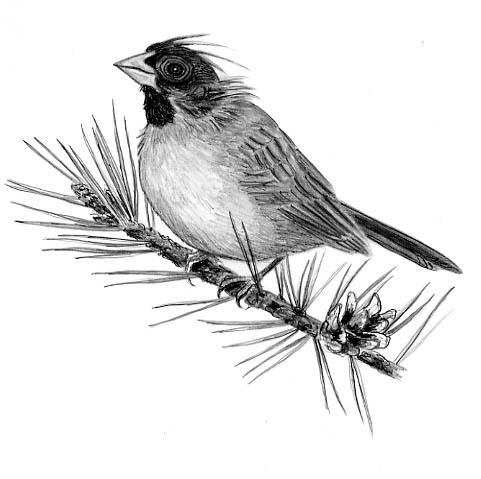
Dear Bird Folks,
I enjoy hearing the early morning songs of the birds around my house. As we approach the end of August and summer is fading out, so has the birds’ singing. They are much quieter now. Are they quiet because they are fattening up for migration? What about the birds that don’t migrate? Why are they so quiet?
– Mary, Westerly, RI
Good for you, Mary,
I’m glad you enjoy hearing the early morning songs of the birds. It really is special. Typically, the first bird to awaken is the robin, followed by the cardinal, and soon a whole host of other birds join in, forming the famous dawn chorus. I love lying in bed each morning listening to the wall of bird songs. At least I used to love it. Unfortunately, my new neighborhood has its own version of a dawn chorus. Each spring morning starts with the heartwarming sounds of lawnmowers, followed by the peaceful purring of leaf blowers, and then the cheerful rhythms of weed wackers. I’m not happy about it, but that’s what I get for buying a house located on the corner of Briggs and Stratton.
It’s romantic to think that the early morning songs are the birds’ way of greeting the day. In reality, bird songs are filled with more aggression then even the dreaded weed wacker. The males are telling all comers to keep out of their territory or there’s going to be trouble. But by the time August rolls around most birds have had their fill of breeding and the early morning singing that goes with it. Their kids have all hatched, grown up and flown away. There’s no more nest building, delivering worms to hungry babies, or getting up early to sing. Now, for the first time in months, the adult birds have a moment for themselves. And what is the first thing the parents do with their newfound freedom? They all go out and get new outfits, of course, which in the bird world means it’s molting time.
Molting is an odd period for birds. Though it’s important that they replace worn feathers with new ones, they have yet to evolve a system in which old feathers are replaced as soon as they wear out. Instead, birds replace all their feathers, both good and bad, at once. When I say “at once” I don’t mean all the feathers blast off the bird in a single instance like the exploding chickens we used to see in cartoons. Molting happens over a period of weeks, with some older feathers remaining in place until newer ones have grown in. There won’t be any totally naked birds hopping around your backyard; the government censors would never allow that. Birds need to keep a percentage of their feathers for thermal regulation and to maintain their ability to fly. The exceptions to this rule are molting waterfowl. They lose so many flight feathers they aren’t able to fly. If a molting duck or goose needs to get around, it is forced to either swim or take public transportation.
Since growing new feathers requires a lot of energy, birds must schedule their molts at the right time of year. In the Northern Hemisphere the best time of year for molting is August. In August, the weather is still warm so the birds won’t freeze and there is usually plenty of food available. It is also a down period for birds. The breeding season has concluded, yet it’s not quite time to migrate or prepare for the coming winter.
For songbirds, the annual molt is generally a period of inactivity. Often the birds stay hidden in thick vegetation and keep a low profile. They try to stay out of sight because the loss of feathers may compromise their flying ability. Also, though they won’t admit it, many bird are self-conscious about their looks. As new feathers grow in and old ones fall out, birds may look a little blotchy, like I did the time I tried to save money by getting my hair cut at the local barber college. This time of year we get lots of calls about odd-looking finches, tailless doves or bald cardinals. These strange birds are clearly molting or have also tried to save money by going to the local barber college.
While all birds molt at least once a year, some molt twice, and some molt one and half a times. Birds that are exposed to dense thickets and thorns suffer considerable feather wear and thus replace all of their feathers twice annually. Most warblers, in order to look hot and flashy in the breeding season, have a partial molt each spring. Some of their duller feathers are replaced with more colorful ones, so they can attract a mate and be better identified by us gawking bird watchers.
There are plenty of birds around in August, Mary, but most are keeping things to themselves while they grow a new coat of feathers. It’s not dead quiet though. You’ll still hear the occasional warning call from a jay or alarm note from a cardinal. And I don’t think a single day passes that I don’t hear the neighborhood family of crows screaming because they are upset about something. Sometimes the crows are so loud I can’t even hear the weed wackers. Bless those crows.